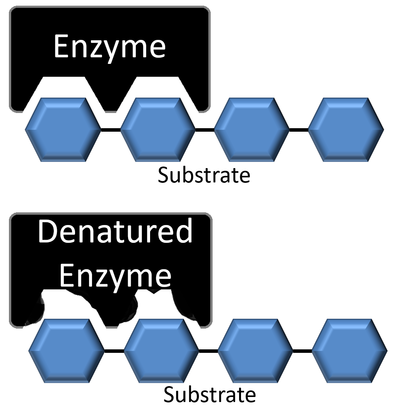Difference between revisions of "Lock and Key Model"
| Line 9: | Line 9: | ||
|[[File:DenaturedEnzyme.png|center|400px]] | |[[File:DenaturedEnzyme.png|center|400px]] | ||
|- | |- | ||
| − | | style="height:20px; width:200px; text-align:center;" |This [[diagram]] shows an [[enzyme]] (the lock) and the [[substrate]] (the key) fitting together. If the lock is '[[denaturation|denatured]]' the key no longer fits the lock and so the [[enzyme]] does not work. | + | | style="height:20px; width:200px; text-align:center;" |This [[diagram]] shows an [[enzyme]] (the lock) and the [[substrate (Biology)|substrate]] (the key) fitting together. If the lock is '[[denaturation|denatured]]' the key no longer fits the lock and so the [[enzyme]] does not work. |
|} | |} | ||
Revision as of 09:05, 5 June 2019
Key Stage 3
Meaning
The lock and key model is a way of explaining why enzymes only work on certain substrates.
About The Lock and Key Model
- The lock and key model proposes that an enzyme is a like lock and a substrate is like a key as only one key can fit a lock, just as only one substrate can fit into the active site of an enzyme.
| This diagram shows an enzyme (the lock) and the substrate (the key) fitting together. If the lock is 'denatured' the key no longer fits the lock and so the enzyme does not work. |
